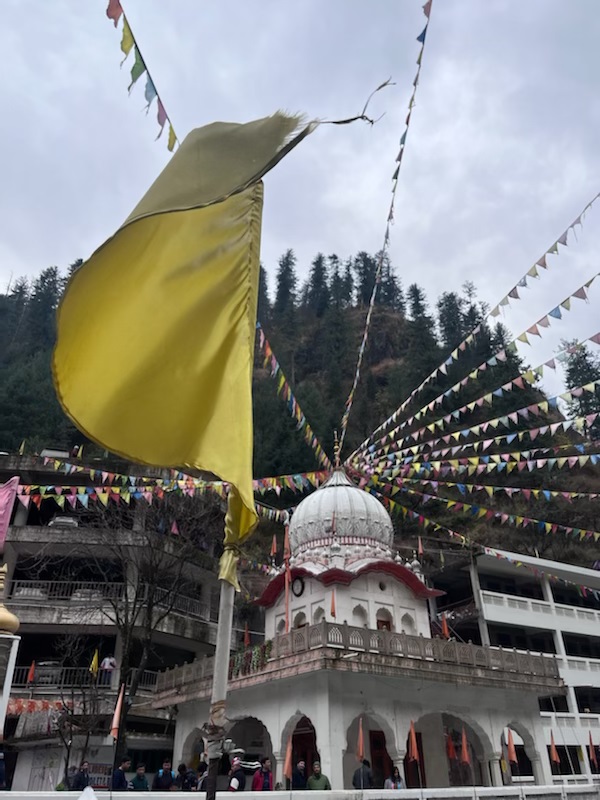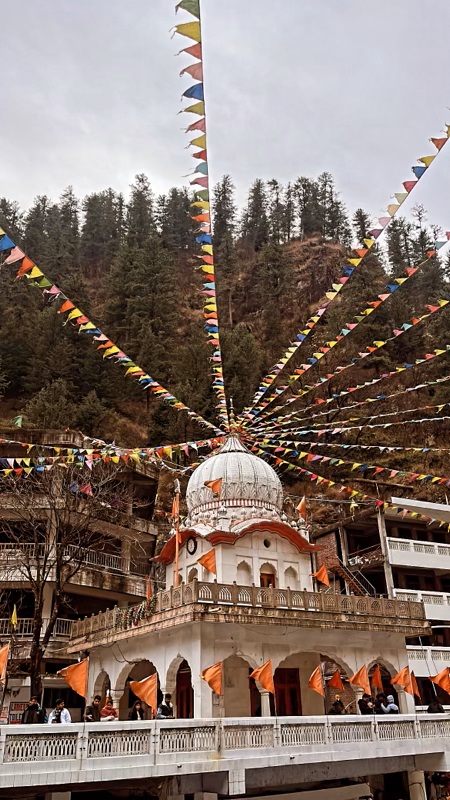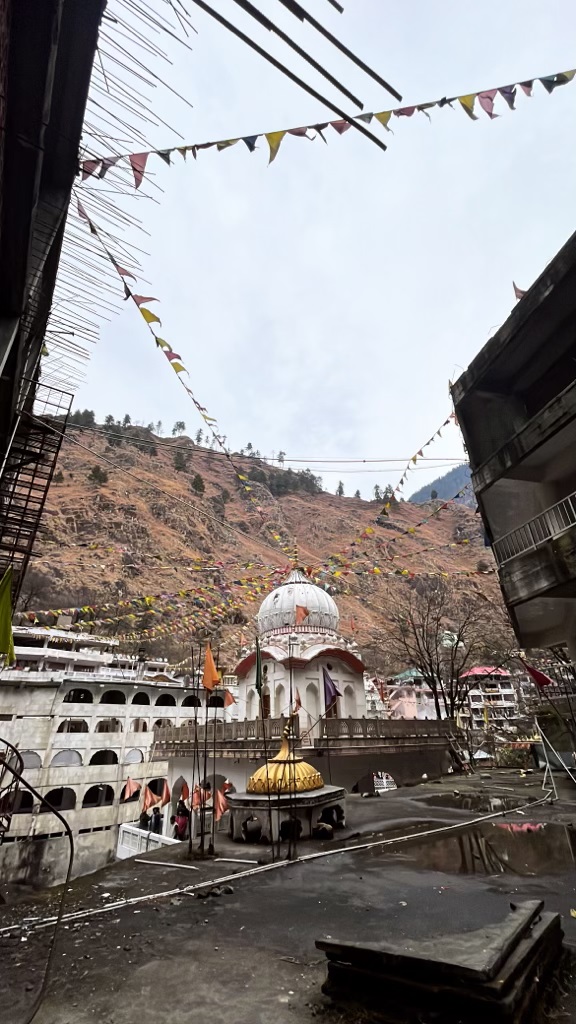Manikaran Sahib is one of the most prominent holy places in India with is situated deep in the lap of the Parvati Valley, right along the shimmering banks of the Parvati River. The Parvati Valley sits in the hilly district of Kullu in Himachal Pradesh. Because of its proximity to the Kasol Valley and Manali, thousands of tourists and pilgrims travel to the holy Manikaran Gurudwara every year. Manikaran is located at a distance of 4 kms from Kasol, and it stands tall amidst the wonders of nature. It is easily accessible by road, and the roads are safe to travel by. Local buses drop you off at the Gurudwara at a very low price, and you can also take local cabs as per your convenience. Kasol and Manali also has bike rentals, and you can travel to Manikaran by bike and your personal car as well.
Hindu Mythology
Manikaran is derived from two Hindu words- ‘Mani’ meaning Gem, and ‘Karan’ which translates to ears. It is widely believed that its name is related to the time when Goddess Parvati and Lord Shiva lived there. As per the story, once Goddess Parvati lost her precious earring in the river, and she went to Lord Shiva to request him to find it for her. Shiva searched for the earring, but he could not find it, and he was enraged. He thought the jewel was stolen by a large serpent swimming in the waters. However, as Lord Shiva was performing his Tandav, the serpent fished out the missing jewel from the waters. Thus, the river came to be known as ‘Parvati River’, and the place got recognised as ‘Manikaran’.
Sikh Mythology
Guru Nanak Dev ji was travelling with his disciples in the Himalayan Mountains many years ago. His disciples were hungry, but there was no food to fill their stomachs. Guru Nanak ji sent his friend Bhai Mardana to collect some food from people to make langar. A lot of people donated flour and rice, but the problem was that there was no fire to cook the food.
It is believed that Guru Nanak Dev ji lifted a rock and a hot spring appeared from the ground. The Sikhs were able to cook the rice and vegetables in this hot springs. However, Bhai Mardana was unable to make the chapatis (called Parsada by Sikhs) as the flour kept sinking in the water. Bhai Mardana said ‘I am going to donate my life in the name of God’, and miraculously the parsadas started floating and cooking. This prompted Guru Nanak Dev ji to say of his most sought after teachings- Anything that is devoted to God will never drown. This miracle encouraged many people to worship that very spot, and build a Gurudwara there to mark and celebrate Guru Nanak Dev ji’s lie and teachings.
Today, the Manikaran Gurudwara stands at the very spot where Guru Nanak ji and Bhai Mardana cooked langar. It is situated at a height of 1829 meters, and is said to rise and fall with the changes in the river water. Along with this beautifully created Gurudwara, several other ancient and renowned temples also contribute to the holy atmosphere of Manikaran. People come from far away places to witness the magic and serenity this place offers. The ambience inside the gurudwara is completely different from that of the outside. The Parvati River adds a chilly atmosphere, specially during the evenings. But even in the peak of winters, the hot springs flowing inside the Gurudwara spreads a lot of heat and coziness. The visitors and devotees can visibly feel the difference between the atmosphere inside the temple and outside.
On a daily basis, the Gurudwara feeds langar to 100s of devotees who come to seek blessings. The caretakers of the gurudwara and those who wish to offer their services help clean and cook everyday, and also wash all the utensils. The Gurudwara never runs out of food no matter how many people come to eat. The highlight is that the langar is cooked in the hot springs, which is a unique experience in itself. The Manikaran Sahib Gurudwara is recognised as a sacred shrine by the Sikhs and is also mentioned in the Twelfth Khalsa, written by Giani Gian Sikh. Manikaran shall always be recognised as one of the most intriguing places in India. I truly believe visiting this pious place is not just a treat spiritually and emotionally, but also an experience one should live at least once.



- Manikaran Sahib Gurudwara - January 19, 2023
- Being a Journalism and Mass Communication Student in Amity University, Noida - January 7, 2023
- Today’s dinner- Afghani Chaap with Roomali Roti - January 7, 2023

